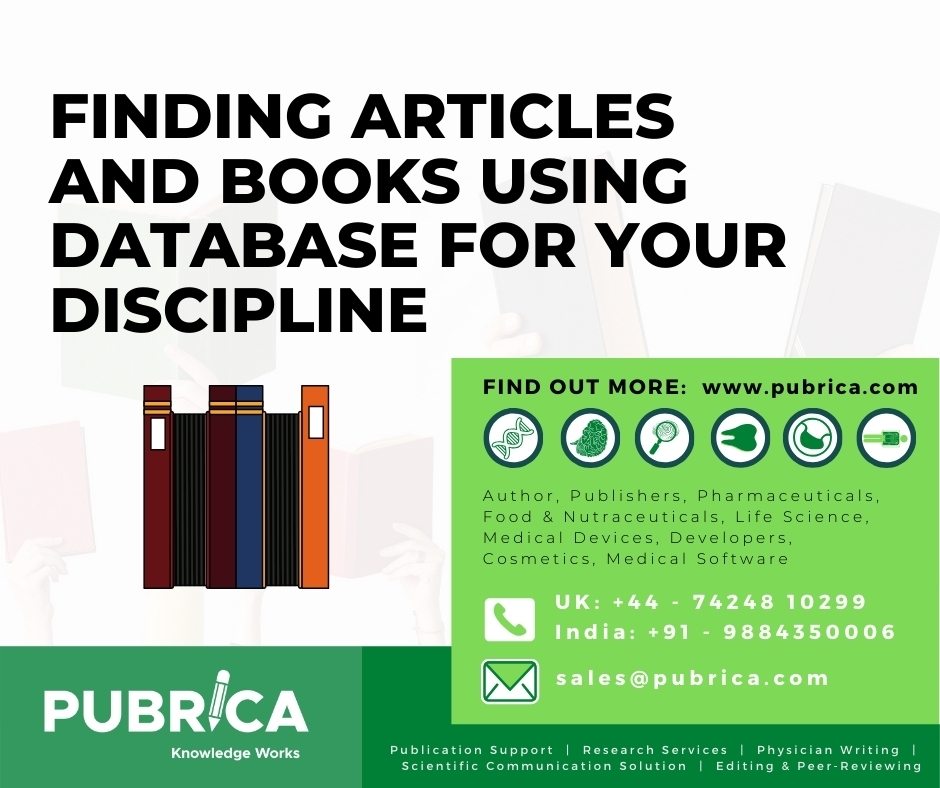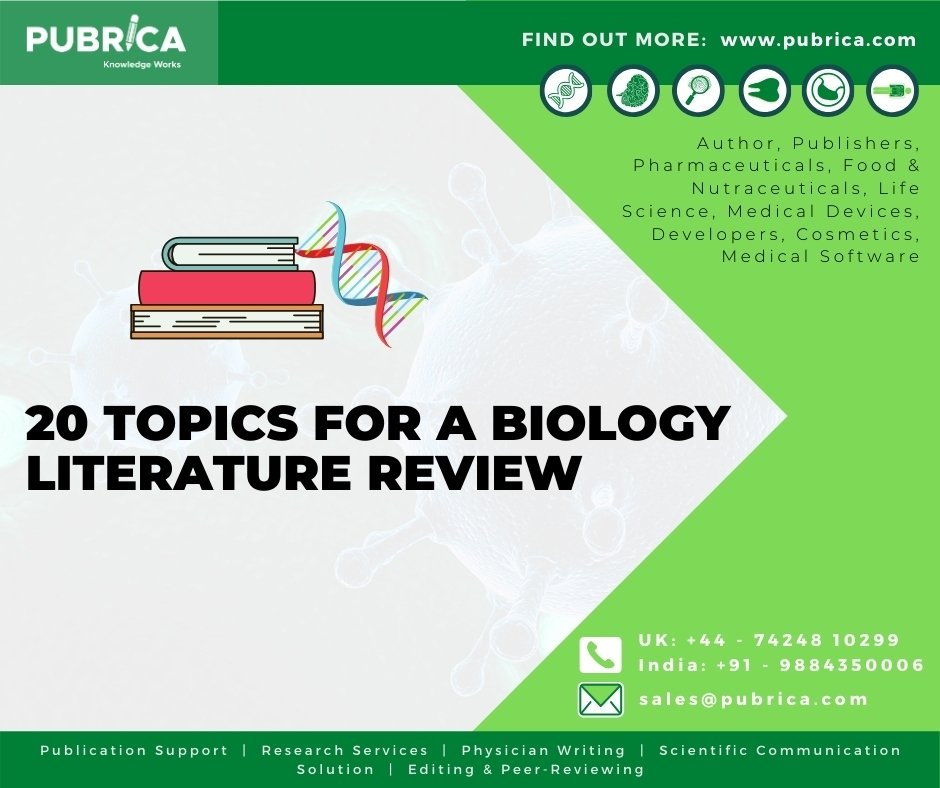
Advanced Stem Cell And Developmental Biology – Experimental Design
March 2, 2020
Finding Articles And Books Using Database For Your Discipline
March 4, 2020
In brief:
- The literature review writing service helps the researchers to complte their medical researches. In most research areas literature reviews are in high demand. A need stems from the ever-increasing output of scientific publications.
- Although recognition for scientists mainly comes from primary research, timely literature reviews and the topic selected can lead to new synthetic insights and are often widely read.

The building block of all academic research activities, regardless of discipline, is to base the work on existing knowledge and link it up. Hence, doing so correctly should be a priority for all academics. However, the task has
A successful and well-done analysis as a research method provides a firm foundation for the advancement of knowledge and the growth of theory. Scientific research support service

Literature Search, Topics, Journals, Coronavirus, Biology
The Process of Conducting a Literature Review
There are a number of steps that need to be taken and decisions are taken to produce a study that satisfies the publication criteria. The basic steps and essential choices involved in conducting a literature review will be suggested and addressed in four phases; (1) Planning of the review, (2) Conducting of the review, (3) Analyses and (4) Writing the review (Palmatier et al., 2018).
Interesting topics to Choose in Biology
Here we have discussed 20 topics to choose in biology, which can be quite interesting. The first 10 topics are explained to the point where we can work and the remaining 10 articles are stated on general themes.
1.Obesity related to Genetic Phenomenon
Obesity is a heterogeneous disease whose biological causes are complex. The increasing frequency of obesity over the last few decades is attributed to environmental factors such as sedentary lifestyles and overnutrition, but that is obese at an individual level is determined by genetic susceptibility (Venkatesan & Mohan, 2016).
2.Is Paleo diet the healthiest choice
Paleolithic diet has been gaining worldwide popularity due to its putative health benefits. “Paleo” was Google’s most wanted diet word in 2014. Nonetheless, a 2015 US News and World Report ranking of 35 diets with feedback from a panel of health experts ranked the Paleolithic diet dead last, citing a lack of evidence of clinical benefits from research (Manheimer et al., 2015).
3.Resistant to Antibiotics
Antibiotics are the’ wonder medicines’ used for battling microbes. Numerous types of antibiotics have been not only used for therapeutic purposes for decades but have been used prophylactically across other fields such as livestock and animal husbandry. Uncertainty has emerged as microbes have become immune to specific antibiotics while the host remains unaware of the development of antibiotic resistance (Zaman et al., 2017).
4.The Need of the Hour – Coronavirus
A cluster of identified-cause pneumonia patients was related to a wholesale market for seafood in Wuhan, China, in December 2019. A previously unknown betacoronavirus was discovered from patients with pneumonia by using objective sequencing in the samples .
5.Impact of Tobacco Use
Cigarettes smoked in the form of either smoke or smokeless is dangerous for the human body. Globally, the death toll from cigarettes has risen to around 6.4 million annually and is on a steady rise (Shah et al., 2018).
6.The need to review HIV
Human Immunodeficiency Virus / Acquired Immunodeficiency Syndrome (HIV / AIDS) is a global health problem: more than 70 million people were diagnosed with HIV, 35 million died, and 36.7 million people are currently living with the disease (Fajardo-Ortiz et al., 2017).
7.The Unsolved Leprosy
Leprosy, a chronic mycobacterial infection caused by Mycobacterium leprae, is an infectious disease that has destroyed human societies for thousands of years. This ancestral pathogen causes cutaneous lesions to disfigure, peripheral nerve damage, ostearticular deformity, loss of limbs and weakness, blindness and stigma (Franco-Paredes & Rodriguez-Morales, 2016).
8.Tuberculosis – The Disease without Boundaries
An airborne disease of Tuberculosis (TB) is caused by Mycobacterium tuberculosis (MTB), which usually affects the lungs causing severe coughing, fever, and chest pain. While current research has provided valuable insight into the transmission, diagnosis, and treatment of TB over the past four years, much remains to be learned to effectively decrease the occurrence of and ultimately eliminate TB (Levine et al., 2015).
9.The Epidemic of the Century – Diabetes
It studies the epidemic essence of diabetes mellitus in various regions. The North Africa and the Middle East region has the lowest prevalence of diabetes in adults (10.9 percent), while the Western Pacific region has the highest number of diabetes-diagnosed adults and countries with the highest incidence of diabetes (37.5 per cent) (Kharroubi, 2015).
10.Parkinson’s Disease
The disease of Parkinson is a progressive neurodegenerative disease characterized by tremor and bradykinesia and is a common neurological disorder. Male sex and advancing age are independent risk factors, and rising productivity and medical resources are taking on increasing toll as the population ages (Hayes, 2019).
General Topics to Focus
- Challenges faced in Research of Herbal Medicines.
- The Global Burden of Periodontitis.
- The new Addiction of the Era – Gaming.
- The prevalence of Road Traffic Accidents among Food Delivery Workers.
- Diet and Nutrition assessment among School Children
- The Boon and Ban of self-medication in India.
- Zombie – A Psychological concept of old tales.
- Backpain among weavers and farmers in India.
- Trends of Oral Cancer in India.
- Self-examination for Breast Cancer among women
Future Scopes
A review of the literature may be thorough or limited, but
it should discuss landmark or principal works and works that have been
important in the field. The complexity of a review of the literature can vary
according to assignment and discipline. The analysis of literature may be part
of a larger piece of work or a stand-alone post, meaning it’s a paper entirely.
Moreover, literature reviews can pave a way to numerous research questions and
research ideas.
References:
- Boyd, B. K., & Solarino, A. M. (2016). Ownership of Corporations. Journal of Management, 42(5), 1282–1314. https://doi.org/10.1177/0149206316633746
- Fajardo-Ortiz, D., Lopez-Cervantes, M., Duran, L., Dumontier, M., Lara, M., Ochoa, H., & Castano, V. M. (2017). The emergence and evolution of the research fronts in HIV/AIDS research. PLOS ONE, 12(5), e0178293. https://doi.org/10.1371/journal.pone.0178293
- Franco-Paredes, C., & Rodriguez-Morales, A. J. (2016). Unsolved matters in leprosy: a descriptive review and call for further research. Annals of Clinical Microbiology and Antimicrobials, 15(1), 33. https://doi.org/10.1186/s12941-016-0149-x
- Hayes, M. T. (2019). Parkinson’s Disease and Parkinsonism. The American Journal of Medicine, 132(7), 802–807. https://doi.org/10.1016/j.amjmed.2019.03.001
- Kharroubi, A. T. (2015). Diabetes mellitus: The epidemic of the century. World Journal of Diabetes, 6(6), 850. https://doi.org/10.4239/wjd.v6.i6.850
- Levine, D. M., Dutta, N. K., Eckels, J., Scanga, C., Stein, C., Mehra, S., Kaushal, D., Karakousis, P. C., & Salamon, H. (2015). A tuberculosis ontology for host systems biology. Tuberculosis, 95(5), 570–574. https://www.sciencedirect.com/science/article/pii/S1472979214205890
- Manheimer, E. W., van Zuuren, E. J., Fedorowicz, Z., & Pijl, H. (2015). Paleolithic nutrition for metabolic syndrome: systematic review and meta-analysis. The American Journal of Clinical Nutrition, 102(4), 922–932. https://doi.org/10.3945/ajcn.115.113613
- Palmatier, R. W., Houston, M. B., & Hulland, J. (2018). Review articles: purpose, process, and structure. Journal of the Academy of Marketing Science, 46(1), 1–5. https://doi.org/10.1007/s11747-017-0563-4
- Shah, S., Dave, B., Shah, R., Mehta, T., & Dave, R. (2018). Socioeconomic and cultural impact of tobacco in India. Journal of Family Medicine and Primary Care, 7(6), 1173. https://doi.org/10.4103/jfmpc.jfmpc_36_18
- Venkatesan, R., & Mohan, V. (2016). Obesity – Are we continuing to play the genetic “blame game”? Advances in Genomics and Genetics, Volume 6, 11–23. https://doi.org/10.2147/AGG.S52018
- Zaman, S. Bin, Hussain, M. A., Nye, R., Mehta, V., Mamun, K. T., & Hossain, N. (2017). A Review on Antibiotic Resistance: Alarm Bells are Ringing. Cureus. https://doi.org/10.7759/cureus.1403
